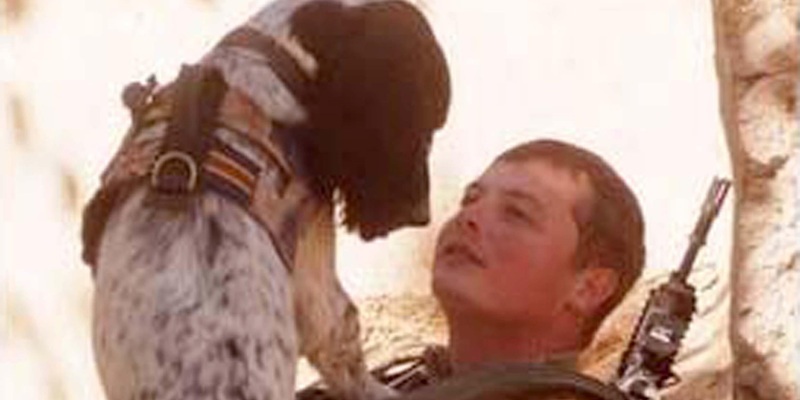The heroic actions of military working dog Theo, who died just hours after his handler was killed in Afghanistan, are to be honoured with the posthumous presentation of the PDSA Dickin Medal – the animals’ Victoria Cross .
The medal, first instituted by the UK’s leading veterinary charity, PDSA, in 1943, is the highest award any animal can receive in recognition of conspicuous gallantry or devotion to duty in saving human life while serving in military conflict.
Theo’s is the first PDSA Dickin Medal to be presented since 2010.
Theo was deployed with his handler Lance Corporal Liam Tasker, from Kirkcaldy, as part of the Royal Army Veterinary Corps’s 1st Military Working Dog Regiment during conflict in Afghanistan in 2010 and 2011.
Their role was to provide search and clearance support, uncovering hidden weapons, improvised explosive devices (IEDs) and bomb-making equipment.
During his time in Afghanistan, Theo made 14 confirmed operational finds, the most any arms and explosives search dog in Afghanistan has found to date.
One such device was found by Theo while supporting 11 Platoon 1 Royal Irish Regiment.
Theo was searching a crossroads in the Nad el Ali South district and detected an improvised explosive device which, if detonated, could have killed many soldiers and civilians.
Theo helped uncover not only many hidden explosive devices, but the materials that could be used to make them.
On December 6 2010, while supporting the Irish Guards and Danish troops forming part of the Coalition forces, Theo identified two bags of fertiliser and a large quantity of parts intended to make IEDs.
On March 1 2011 Theo and Lance Corporal Tasker were on a mission in support of the Irish Guards in the Nahr-e Saraj district in Helmand, when a fire-fight broke out, killing Lance Corporal Tasker.
Theo was being taken back to Bastion when he started having seizures. Despite immediate first aid and veterinary treatment, he died.
The partnership of Lance Corporal Tasker and Theo, said by colleagues to be ”inseparable”, had been hugely successful.
They uncovered 14 home-made bombs and hoards of weapons in just five months, which helped prevent hundreds of deaths.
On one occasion, Theo found an underground tunnel leading to a room in which insurgents were suspected of making bombs and hiding from coalition forces.
PDSA director general Jan McLoughlin said: ”Theo’s exceptional devotion to duty as a military working dog in Afghanistan saved countless human lives.
”The award of this medal serves as a very poignant reminder of the loyal companionship and dedication of man’s best friend.”
Theo’s posthumous presentation will bring the total number of PDSA Dickin Medals awarded to animals in war to 64.
Since the introduction of the medal by PDSA founder Maria Dickin CBE in 1943 it has been awarded to 28 dogs (including Theo), 32 second world war messenger pigeons, three horses and one cat.
”Theo’s exceptional devotion to duty saved many from death and injury.”
